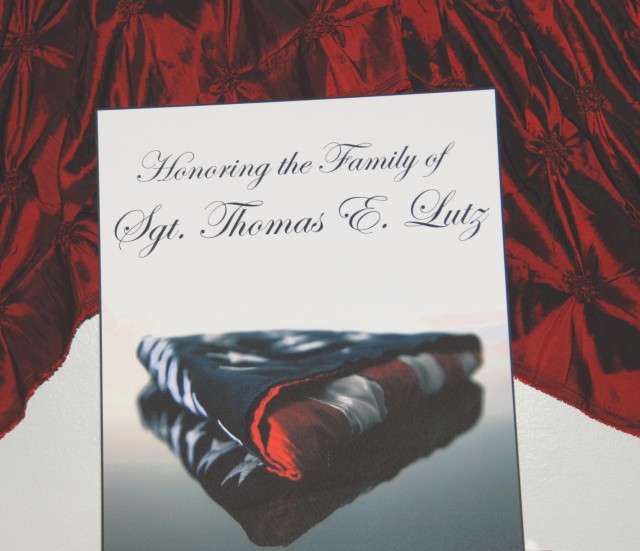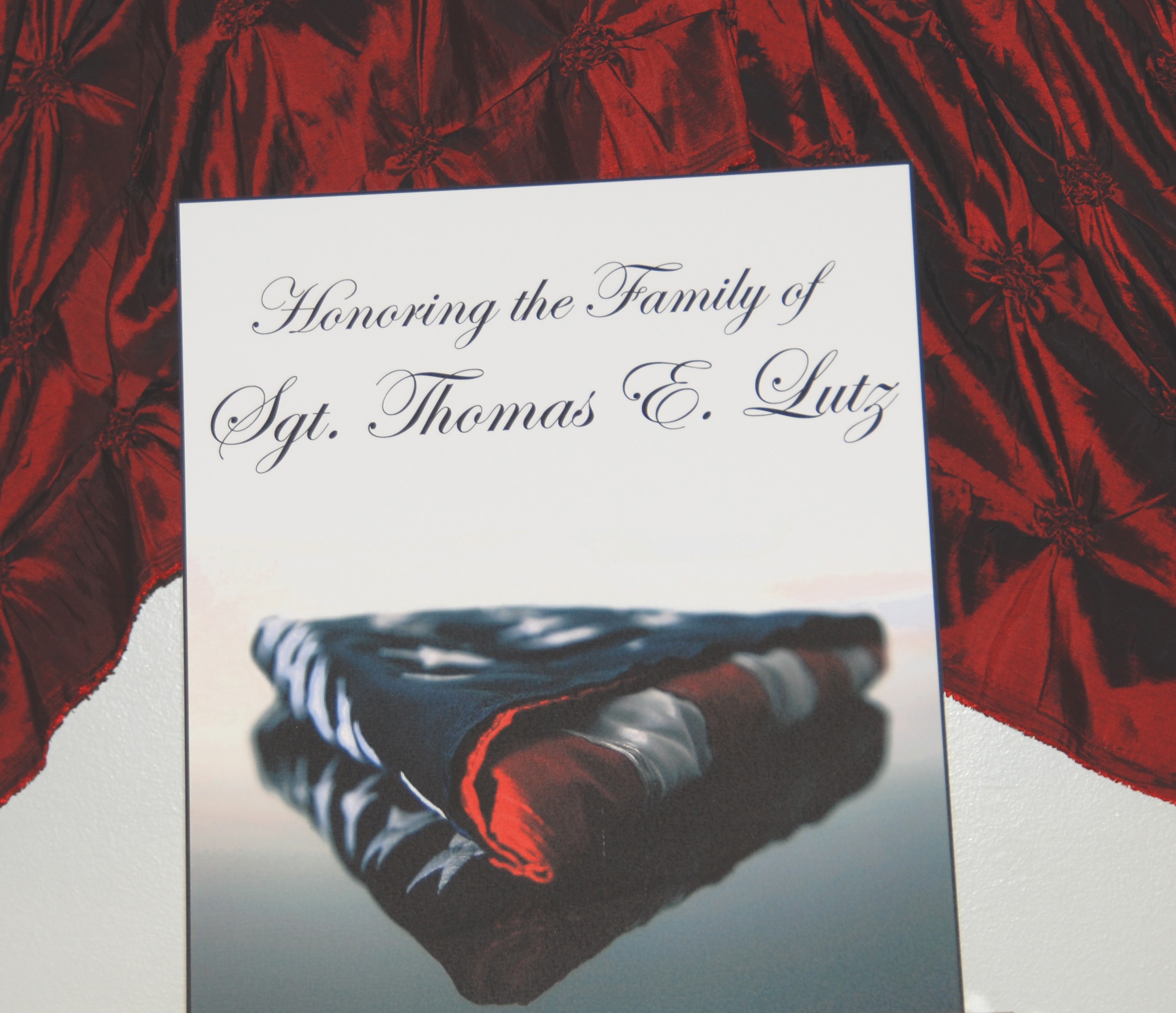FORT SAM HOUSTON, Texas -- In an informal yet moving ceremony, the Gold Star Flag tradition was carried on for five local Families gathered for a bittersweet presentation of their flags, June 12 at Army Community Service.
Hosted by the Blue Star Mothers of America San Antonio, Chapter Four and the ACS Survivors Outreach Services Program, the ceremony honored Sgt. Thomas E. Lutz, Pvt. Angel Estrada, Pvt. Victor Adame and U.S. Marine Corps Sgt. Cesar B. Ruiz and Cpl. Jacob Leicht.
Before the start of the ceremony, Families rallied around displays featuring the names of the five fallen memorialized on placards showing a folded American flag and a single red rose symbolizing they are loved and missed. Families hugged, cried and spoke of their Soldier with pride.
The simple ceremony offers the opportunity for the newest Gold Star Flag recipients to meet and talk with other Families who are experiencing similar emotions and situations.
Felicia Hilliard, Survivor Outreach Services program manager, said, "We think it is very important to come together, as a Family to support the survivors of our fallen Soldiers and to ensure continued support."
Patrick Miller, father of Pvt. Anthony Scott Miller, who was killed in Iraq in 2003, spoke on behalf of other Gold Star Families.
"I'm here today representing the Gold Star Families of San Antonio," Miller said. "The Families gathered here today have someone who has fallen in battle or in country; it doesn't matter, they perished in the service of our great country. We meet today to honor the newest members of our group and we want you to know you are not forgotten."
Tammy Busby, a Blue Star Mother added, "For those of us who are Blue Star Mothers, our children come home. Gold Star Families have someone who did not come home and that pain never goes away."
The gold star flag tradition began with a blue star flag designed and patented in 1917 by Capt. Robert L. Queissner of the 5th Ohio Infantry, who wanted to recognize the World War I service of his two sons on the front lines.
Also known as service flags or banners, Families hung the blue star flag in their windows, one star for each child in service.
According to http://www.usflag.org, a website dedicated to the history of the U.S. Flag and other official American banners, President Woodrow Wilson approved wearing a gold star on the traditional black mourning arm band in 1918 for mothers who lost a child serving during the war.
This led to the tradition of covering the blue star with a gold star on the service flag to indicate that the service member has died or been killed.
Though the first Blue Star Flag was hung during World War I, it wasn't until 1942 that more than 600 mothers organized the Blue Star Mothers of America, Inc. The organization was part of a movement to provide care packages to military members serving overseas and also provide assistance to Families encountering hardships as a result of their son or husband serving during WWII.
Congress chartered the Blue Star Mothers of America in 1960 and in 1966 the Department of Defense revised the specifications for the design, manufacture and display of the Service Flag.
The colors are symbolic in that the blue star represents hope and pride and the gold star represents sacrifice to the cause of liberty and freedom.
As the ceremony ended, Grady Peavy, Fort Sam Houston Mortuary Affairs Coordinator, offered encouragement and hope during the benediction, "Whether you lost a son or daughter, don't ever think they died in vain. Everyone here was put on earth for a purpose."
Peavy sang a personal rendition of "Amazing Grace" a cappella, while many of the attendees fought tears as the words penetrated to the room.


Social Sharing